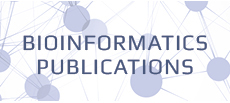Systems Vaccinology: integration of informatics and multi-scale biology to understand and predict
human responses to vaccination.
Supervisor:
Emilio Siena (emilio.siena@novartis.com)
Research interest of Group:
Immunology, systems biology, biostatistics, vaccinology, systems immunology and systems
vaccinology.
PhD project:
Vaccination has been hailed as one of the top public health achievements of the last century and has
improved human health enormously. The problem is, several decades after the implementation of
this practice we are still not quite sure how vaccines work. While important components of a
vaccine response have been largely characterized, we still miss to understand which features of a
vaccine response are required for immunological protection or whether different vaccines induce
similar patterns of immunity. De facto, discovery and development of new vaccines has been
mainly based on a trial-and-error approach rather than on rational design, typical of modern drugs
development.
Efforts toward a rational vaccine design are represented by a series of recently published studies
that have used systems biology approaches to identify molecular networks that orchestrate
immunity in response to vaccination in humans.
Particularly, analyses of the immune response to the vaccine against yellow fever virus (YF-17D)
and influenza virus have provided proof of the concept that molecular signatures in the blood of
humans, induced within a few days after vaccination, can be used to predict the magnitude of the
response to vaccination and have started yielding new insights into the vaccine response
mechanisms.
The new field of 'systems vaccinology' has emerged from such data and is poised to address the
mechanisms that control immune responses to vaccination and identify predictors of vaccine
efficacy.
In the perspective of analyzing data coming from human vaccine clinical trials, blood represents a
convenient tissue for gathering information as it provides a readily accessible and reproducible data
source. However, the extent of vaccine-induced change in the blood can be small, while the number
of genes measured in a typical gene-expression profiling experiment is large, making it difficult to
distinguish signal from the noise. To overcome this limitation, some groups have started defining
modules of co-regulated genes for summarizing transcriptional information. Another advantage is
that modules represent a more tolerant measurement to inaccuracy relative to single genes.
Additionally, modules will facilitate the biological interpretation. Cellular functions, in fact, do not
result from the isolated activities of individual genes but are given by the cooperative effects of
functionally interacting gene products.
This project seeks to provide new insights into the human immune response to vaccination, with
particular focus to the investigation of early-stage (innate) transcriptional programs that get
involved. Differences and similarities in the transcriptional signatures induced by different vaccines
or vaccine components (i.e. alternative antigen forms or different adjuvants) will be evaluated
through the comparison of different phenotypes or conditions of interest. Possible comparisons
include: samples obtained before and after vaccination, subjects which received different vaccines
(ex. same antigen formulated with different adjuvant compounds) and subjects with different
degrees of vaccine induced immunological responses (antigen-specific antibodies and T lymphocyte
responses, among others).
The core data will be represented by gene-expression profiles measured in the peripheral blood,
biopsies collected at the injection site and possibly other tissues, from few hours to few days after
vaccine administration. Data will be gathered from exploratory clinical trials, aimed at the
investigation of vaccines’ efficacy and safety, which are being managed by the BioVAcSafe
(Biomarkers for Enhanced Vaccine Safety) and the ADITEC (Advanced Immunization
TEChnologies) consortia.
Transcriptional data will be integrated based on the blood transcriptional modules (BTMs) defined
by Li et al. Those modules, which have been generated trough the comparison of more that 540 data
series and more than 32000 samples, represent the today’s gold standard. While providing a
significant improvement over individual gene data, Li’s BTMs reach a much higher resolution
compared to other modules that have been applied to vaccine study. Additionally, both the BTMs
definition and functional annotation steps integrated different types of information (canonical
pathways, gene ontology, interactions, bibliome and cell type-specific expression data) making
those particularly informative during results interpretation.
The analysis will be supplemented with a multitude of additional data reflecting the magnitude and
quality of subjects’ response to vaccination along with vaccine safety. Example of such data
include, but are not limited to, B-lymphocytes and antibody response, effector and memory Tlymphocytes
response, cytokines response and clinical data such as body temperature, blood
chemical analysis or reactogenicity at the injection site. Statistical techniques will then be applied to
estimate the most likely relationships between molecular entities. For example, the extent of one or
more BTMs activation and the magnitude of antibody response measured at a later stage.
Ideally, this systems vaccinology effort will serve a double purpose. Firstly, it will provide new
insights into the understanding of vaccine response mechanisms, which could be used to optimize
immunogenicity for better and more durable protection. Secondly, it will identify correlates and/or
predictors of vaccine efficacy that could be used to speed up new vaccines development.
Technologies employed:
Transcriptional data will be produced using gene expression profiling microarray technology. Both
Agilent Technologies and Affymetrix platforms will be employed. Eventually, next generation gene
expression profiling data, using the Illumina HiSeq 2000 platform, will be produced and analyzed.
The immunological response of tested subjects will be assessed through blood cytokine profiling,
evaluation of antigen-specific immunoglobulins, B- and T-lymphocytes using ELISA and ELISpot
techniques. The peripheral blood mononuclear cells composition will also be evaluated, at various
time points, using flow cytometry and mass cytometry technologies.
Relevant publications on the topic:
• Querec TD, et al. Systems biology approach predicts immunogenicity of the yellow fever
vaccine in humans. Nat Immunol 10(1):116-25 (2009).
• Nakaya HI, et al. Systems biology of vaccination for seasonal influenza in humans. Nat
Immunol 12(8):786-95 (2011).
• Zak DE, et al. Merck Ad5/HIV induces broad innate immune activation that predicts CD8⁺
T-cell responses but is attenuated by preexisting Ad5 immunity. Proc Natl Acad Sci USA
109(50): E3503–E3512 (2012).
• Obermoser G, et al. Systems scale interactive exploration reveals quantitative and
qualitative differences in response to influenza and pneumococcal vaccines. Immunity
38(4):831-44 (2013).
• Pulendran B, et al. Systems Vaccinology Immunity 33:516-529 (2010).
• Chaussabel D, et al. A modular analysis framework for blood genomics studies: application
to systemic lupus erythematosus. Immunity 29(1):150-164 (2008).
• Li S, et al. Molecular signatures of antibody responses derived from a systems biology study
of five human vaccines. Nat Immunol 15:152-162 (2014).
• Rappuoli R & Aderem A. A 2020 vision for vaccines against HIV, tuberculosis and malaria.
Nature 473:463–469 (2011).
PhD technical development:
The student will develop a comprehensive knowledge of the biological processes occurring during
an immune response to an infection or immunization. He/She will develop an understanding of the
type of data that will be measured and of the rationale behind the data collection. The student will
develop all the necessary skills to import, normalize, process, integrate, analyze, represent and store
high dimensional data (i.e. microarray expression profiles). Specifically, the student will learn how
to use the Bash, R and Perl programming languages to autonomously develop custom algorithms
necessary for the analysis pipeline and to integrate third party codes available from the
Bioconductor and BioPerl repositories. In addition to writing novel algorithms, the student will also
develop the ability to effectively use publically available software like the TM4 microarray
software suite or the InnateDB database. Finally, the research activities will be coordinated in such
a way to allow the student to publish his/her findings on a scientific journal.




